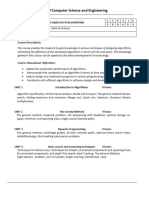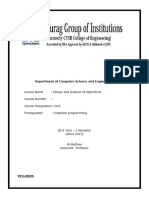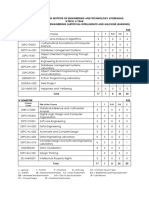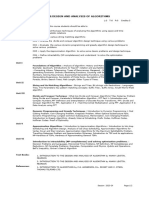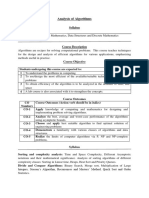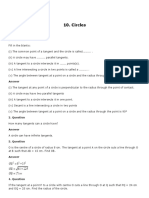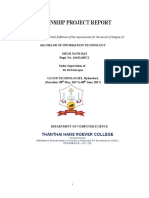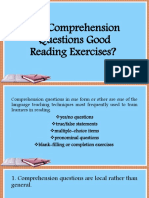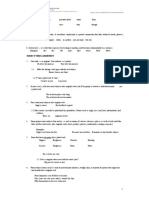0% found this document useful (0 votes)
34 views4 pagesDAA Theory Syllabus
The course BCSE503, titled Design & Analysis of Algorithm, provides students with the skills to design and analyze efficient algorithms using various paradigms such as divide and conquer, greedy algorithms, and dynamic programming. It covers algorithm performance evaluation through time and space complexity analysis, advanced data structures, and real-world applications of graph algorithms. The course includes assessments like class attendance, teaching assignments, and examinations to evaluate students' understanding of the material.
Uploaded by
farawey903Copyright
© © All Rights Reserved
We take content rights seriously. If you suspect this is your content, claim it here.
Available Formats
Download as DOCX, PDF, TXT or read online on Scribd
0% found this document useful (0 votes)
34 views4 pagesDAA Theory Syllabus
The course BCSE503, titled Design & Analysis of Algorithm, provides students with the skills to design and analyze efficient algorithms using various paradigms such as divide and conquer, greedy algorithms, and dynamic programming. It covers algorithm performance evaluation through time and space complexity analysis, advanced data structures, and real-world applications of graph algorithms. The course includes assessments like class attendance, teaching assignments, and examinations to evaluate students' understanding of the material.
Uploaded by
farawey903Copyright
© © All Rights Reserved
We take content rights seriously. If you suspect this is your content, claim it here.
Available Formats
Download as DOCX, PDF, TXT or read online on Scribd
/ 4
